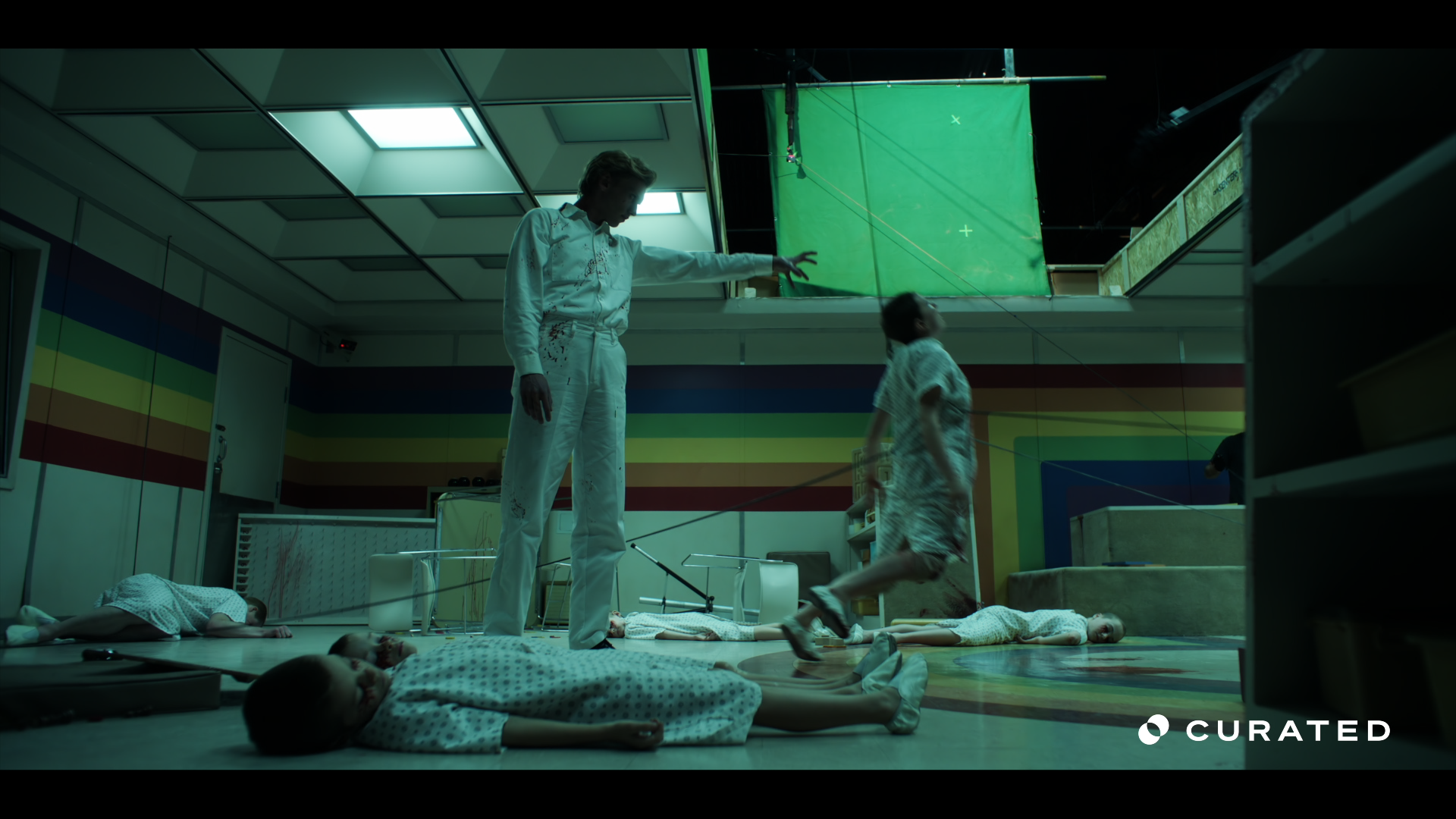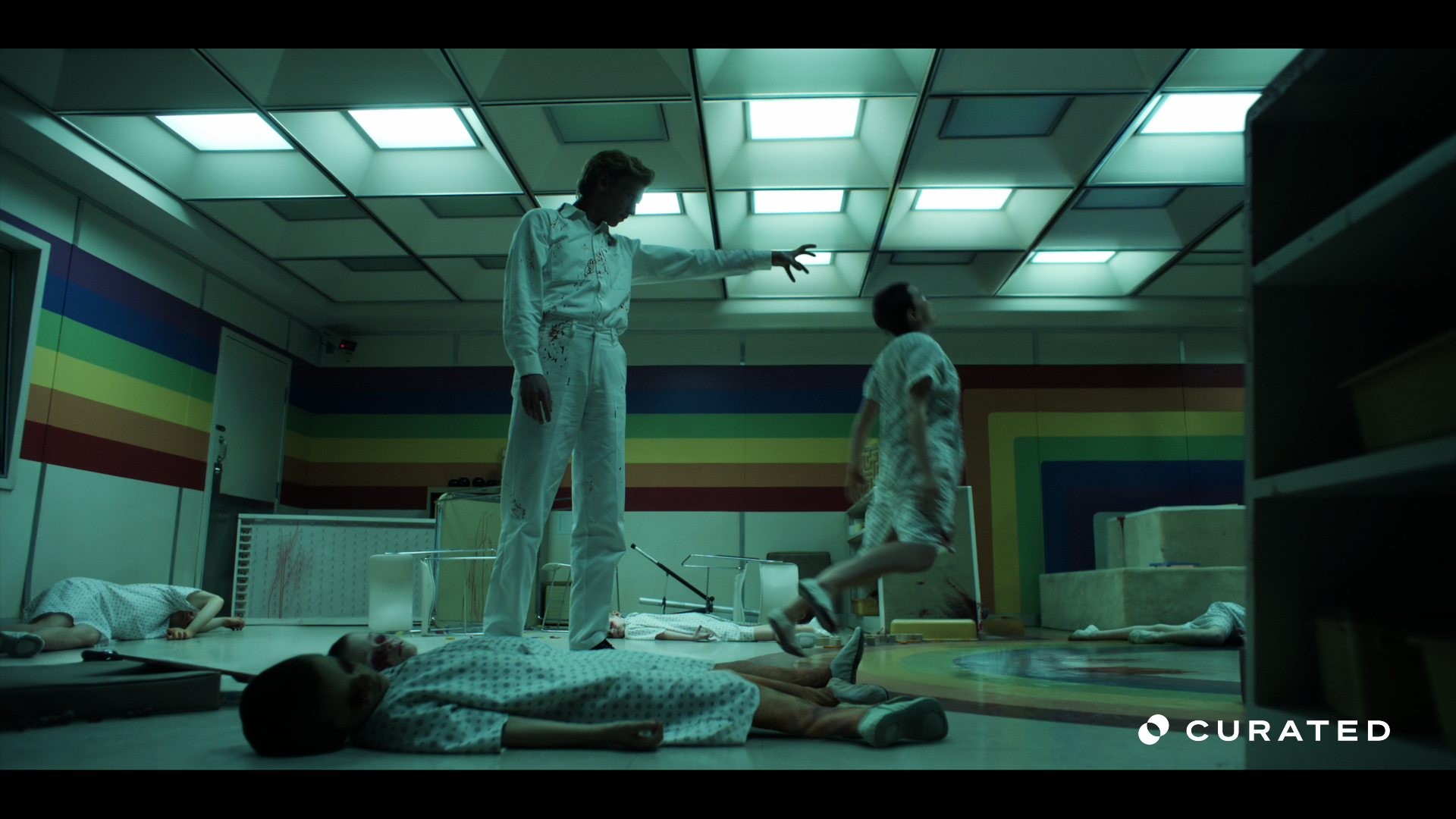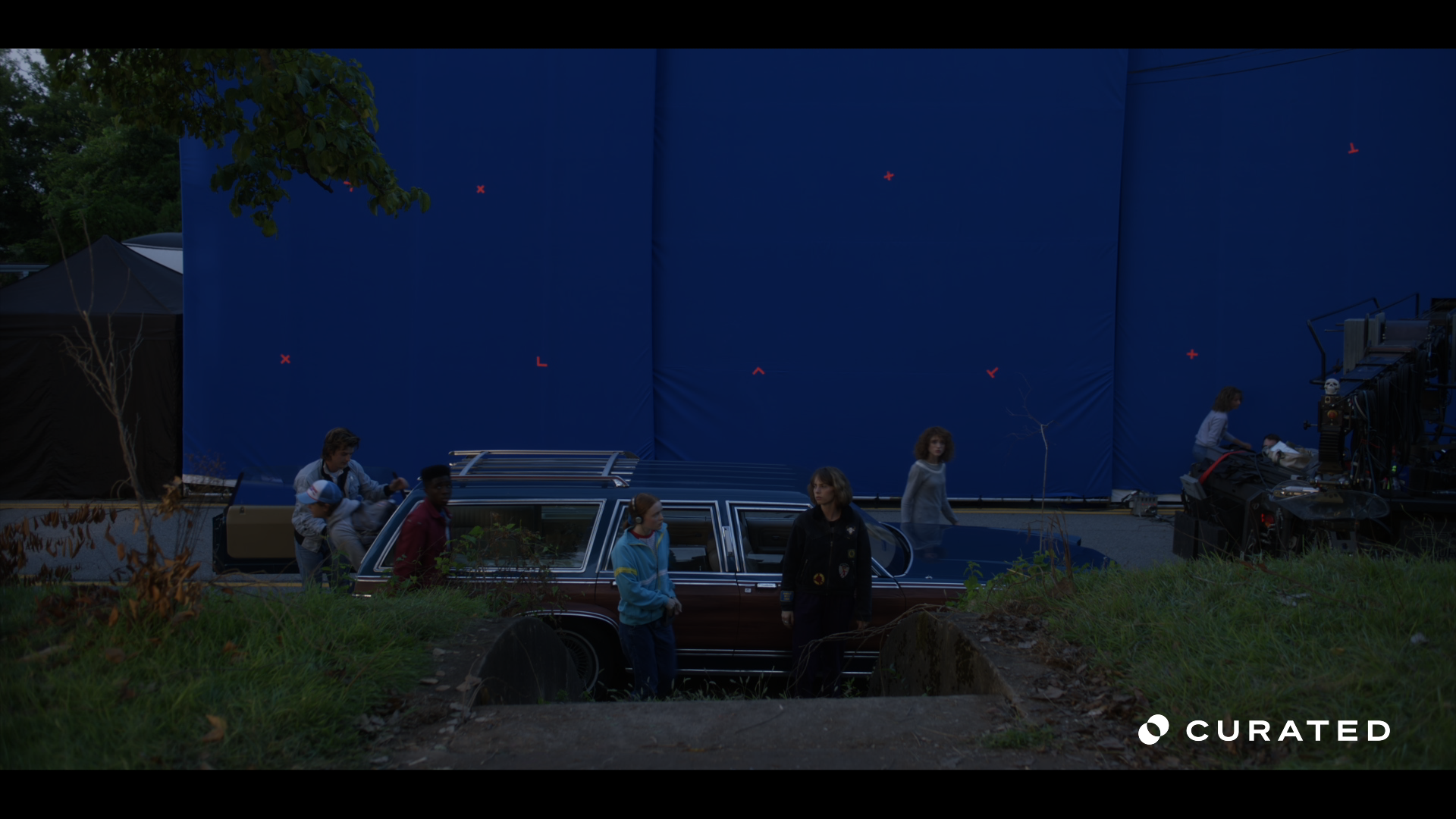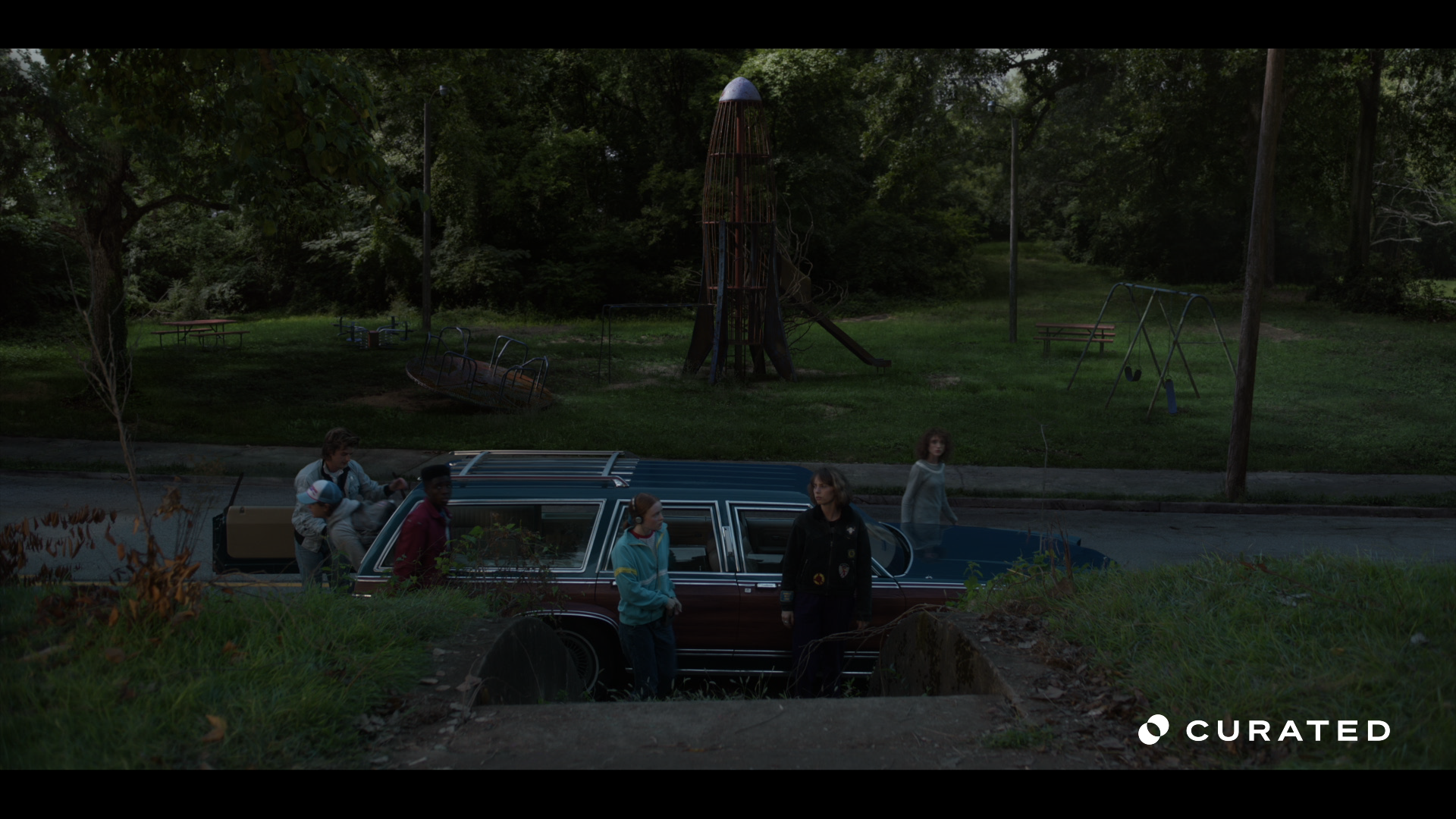STRANGER THINGS
SEASON 4
Curated handled approximately 100 shots for season four of hit Netflix of series Stranger Things. Spread out over multiple episodes, the work combined both prominent gore shots including a significant number of digital doubles and a slew of digital body parts for a scene where the character Vecna (Jamie Campbell Bower) uses his dark powers to slaughter a group of children inside a hospital ER, and less obvious effects such as those involved in digitally inserting a playground across the street from a character’s house.
CLIENT NETFLIX
DIRECTORS THE DUFFER BROS.
NETFLIX VFX SUPERVISORS MICHAEL MAHER, JABBAR RAISANI,
MARION SPATES
NETFLIX VFX PRODUCER TERRON PRATT
VFX supervisors Ed Mendez, Ryan Leonard and Lopsie Schwartz all oversaw portions of work, which was modelled, designed animated and composited by among eight to 15 of the company’s 2D and 3D artists devoted to the show at different points of the process.
To set the look for the hospital carnage, replete with bones, appendages and gouged-out eyes, the artists first created the mangled digital limbs – a delicate operation that needed to look and feel both photorealistic and anatomically correct -- while also evoking in the viewer the feeling, even in a flashing glance, that something unnatural is happening to these children. Vecna is trying to kill the kids by just snapping them into pieces. Hands and feet would need to be positioned on the victims pointing in ways hands and feet never be. Femurs and other body parts that really aren’t supposed to just break are being torn apart here.
Curated had previous experience severing and contorting limbs for filmmaker M. Night Shyamalan on his horror adventure Old, so they already had worked out methods to create this type of mayhem. Unlike on that project, they were working with plates of child actors who were more likely to squirm around during the live action shoot and who could only work limited hours. Curated artists had to digitally keep them still, remove all signs of their breathing and occasionally disguise the fact that one of the kids was replaced by another during the process of shooting these plates.
The company had to do a lot of augmentation and replacement work to represent breaking bones and twisting muscles and tendons. In order to have the flexibility seamlessly composite the digital elements with the live action, Curated’s 3D artists modelled and built a recreation of the hospital room based on the actual room layout in order to have more flexibility.
A list of less gory effects includes shots from a house which the script locates directly across the street from a playground. The house and playground were both physical sets but they were not actually across from one another. Curated’s artists made use of LIDAR scans to capture the physical properties of the playground in 3D space and brought that information into Nuke so they would have a complete digital representation of area to work with wherever needed.
While it might initially seem as if a lot of the CG park work could have been accomplished with more simple 2D matte paintings, Leonard explains, “It would have been a good place for a 2D solution if there wasn't a lot of camera movement. But when you introduce camera movement, you have parallax issues with objects sliding behind other objects.
“In addition, it was important to always achieve the kind of dynamic lighting that the producers need to see. They always pushed the photo realism aspect. Changing the lighting on a 2D matte painting would be a very laborious process because an artist would have to paint in where highlights and various lighting effects would change. But once the playground set existed in CG, we could much more efficiently updating the lighting and camera angles -- moving all the pieces around – as we did revisions. It required a little bit more time investment at the start but we more than made up for it as we were refining shots.”
The artists also had to eliminate stray elements within the live action plates -- production trucks and equipment -- while retaining real leaves and grass fluttering in the wind from that location. Often, it’s the littlest thing that can require the ability of a top-notch VFX artist to sell a complex VFX shot. “Obviously,” says “people zero in on big fight scenes and [obviously CG] locations, but the lifeblood of the visual effects industry is in creating shots that the audience might not realize are effects at all. Just a character on their front lawn where you don’t know that everything behind him has been fabricated.”
VISUAL EFFECTS SUPERVISORS ED MENDEZ, RYAN LEONARD, LOPSIE SCHWARTZ
VISUAL EFFECTS PRODUCER KAY CHEN
CG SUPERVISOR DAN BORNSTEIN
COMPOSITING SUPERVISORS KELLY BRUCE, ROBERT NICK DAUPHINAIS
MANAGING DIRECTOR RYAN CUNNINGHAM



